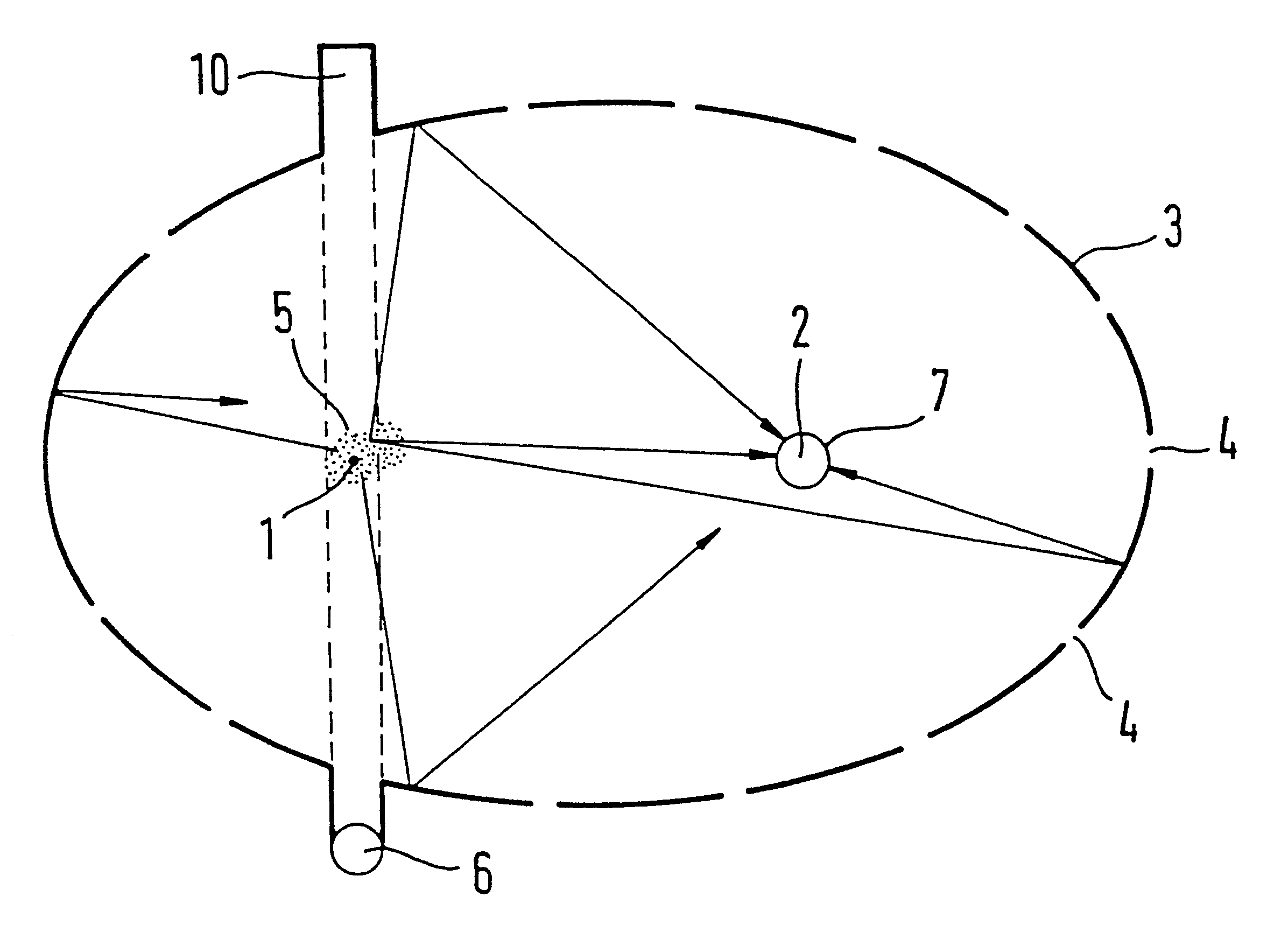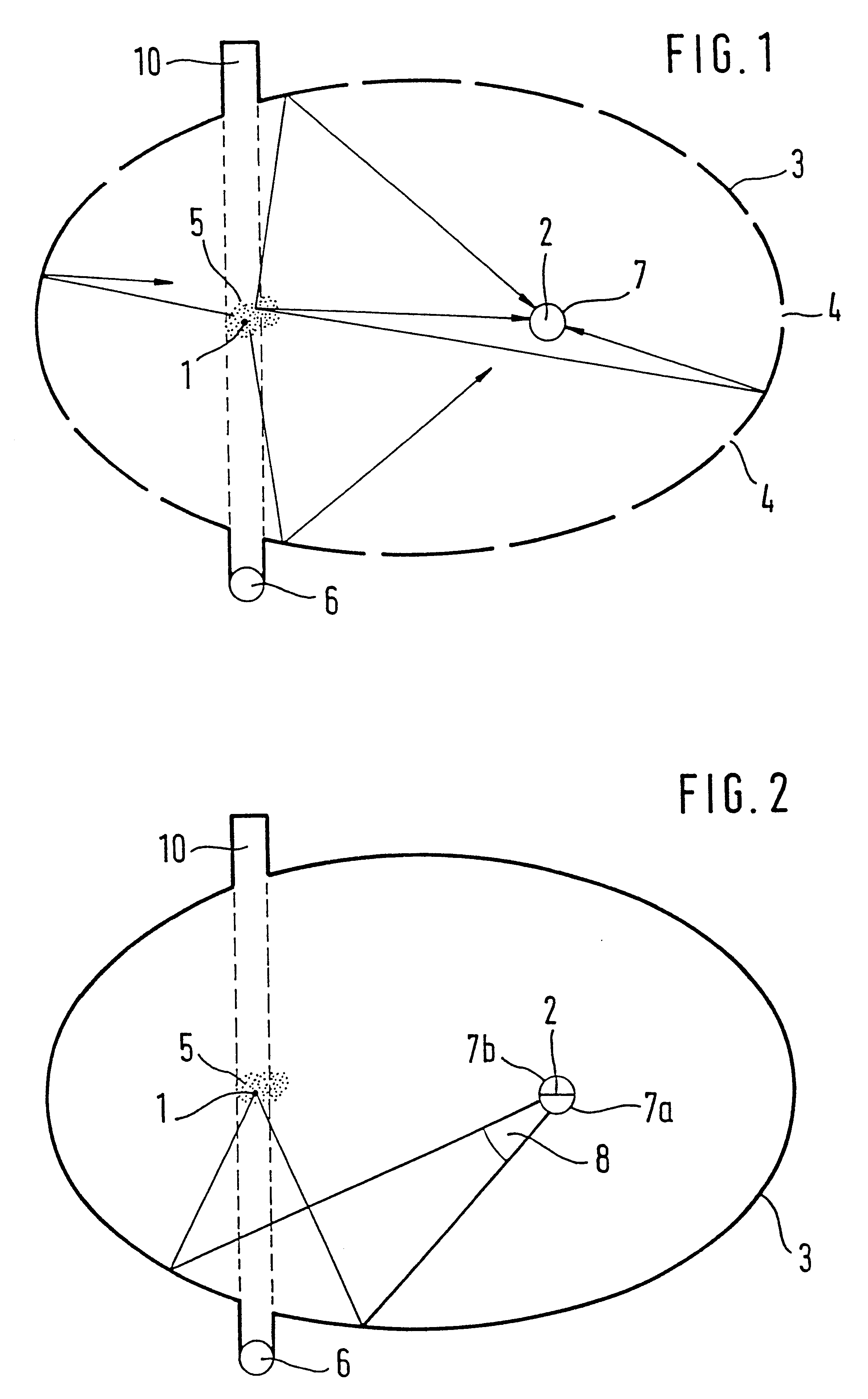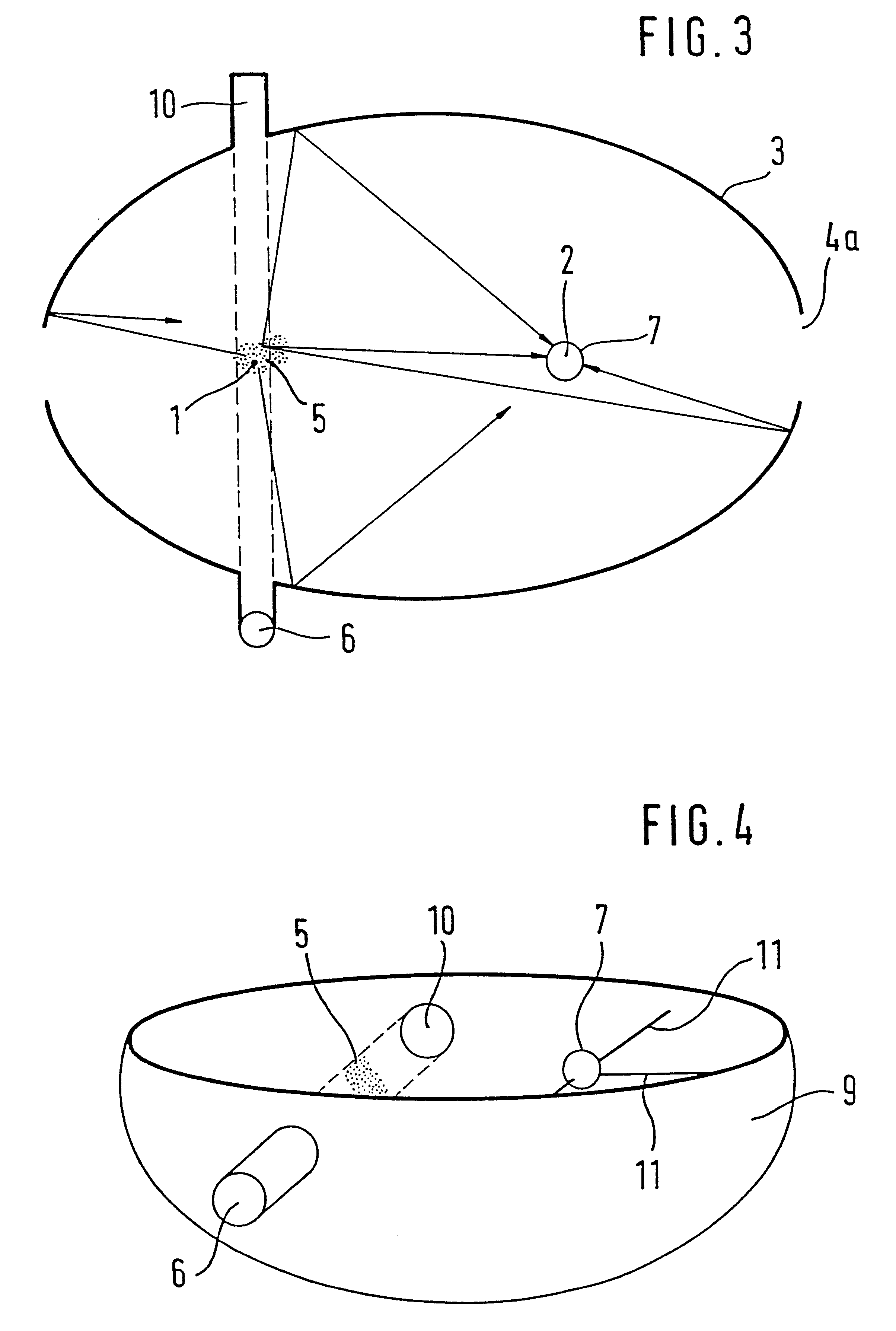Smoke detector
a detector and smoke technology, applied in the field of smoke detectors, can solve the problems of small proportion of scattered radiation hitting the radiation receiver, and the loss of remaining scattered radiation to measuremen
- Summary
- Abstract
- Description
- Claims
- Application Information
AI Technical Summary
Benefits of technology
Problems solved by technology
Method used
Image
Examples
Embodiment Construction
FIG. 1 shows the basic arrangement in a section taken through the focal points 1 and 2 of a hollow ellipsoid 3. The hollow ellipsoid 3 is mirror-coated on the inside and is provided with openings 4, which are small in proportion to the inside surface area of the hollow ellipsoid 3, or in other words make up a maximum of 10% of the inside surface area, for example. The first focal point one and its immediate vicinity form the measuring field 5, where smoke particles can be simultaneously irradiated by a radiation transmitter 6 and detected by a radiation receiver 7 at the focal point 2. The radiation receiver 7 includes a radiation collector, which is mounted at the second focal point 2. However, it is also possible instead for the radiation receiver itself to be mounted there. As the radiation collector, it is possible for instance for one hemispherical lens each to be used for the half shell of the hollow ellipsoid 3 located below and above the plane of the drawing, respectively.
Th...
PUM
 Login to View More
Login to View More Abstract
Description
Claims
Application Information
 Login to View More
Login to View More - R&D
- Intellectual Property
- Life Sciences
- Materials
- Tech Scout
- Unparalleled Data Quality
- Higher Quality Content
- 60% Fewer Hallucinations
Browse by: Latest US Patents, China's latest patents, Technical Efficacy Thesaurus, Application Domain, Technology Topic, Popular Technical Reports.
© 2025 PatSnap. All rights reserved.Legal|Privacy policy|Modern Slavery Act Transparency Statement|Sitemap|About US| Contact US: help@patsnap.com



